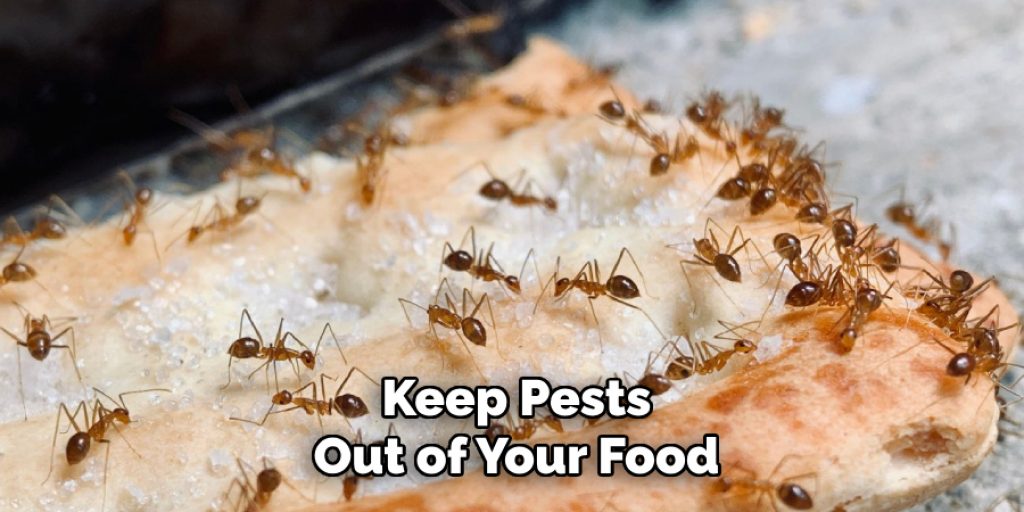How to Stop Rats Getting Under Roof Tiles
Rats are a pest that can be found in many parts of the world. They tend to live near people and their homes because they get food from us. Rats love to chew on things, which includes rubber and plastic materials like wiring and insulation. This means if you have rats in your home, they’ve likely chewed through some wires or damaged insulation around your house, which might lead to costly repairs down the line.

To stop them from getting under roof tiles, make sure there is no food anywhere in the garden; use traps; seal up spaces where rats may enter; clear out any rubbish piles; place netting over drains; plug holes with mortar mix. In these blog posts, we will discuss how to stop rats getting under roof tiles. So read on to know more information!
Seven Reasons Why You Should Stop Rats Getting Under Roof Tiles:
- Rodent damage to roof tiles, flashings, and the sealing on roofs can cause leaks resulting in costly repairs that can be avoided.
- Roof rats might chew electrical wiring, resulting in fire and potential electrocution of the household occupants and neighbors.
- Roof rats nesting under roofing can make it unsafe for people and pets to be on the roof.
- Rat droppings and urine can damage insulation within walls and roofs.
- Roof rats can cause damage to trees and shrubs: they will eat the bark off of new growth and strip fruit and ornamental trees.
- Rats can transmit diseases, such as Hantavirus, through their saliva, droppings, or urine. This is not restricted to roof rats, but any rodent that accesses your home can be a carrier.
- Roof rats can cause significant structural damage to homes and buildings and should be eradicated as soon as possible.
10 Ways on How to Stop Rats Getting Under Roof Tiles:

1. Seal All Holes on Your Property:
Check your shed, garage, outbuildings, and house for any gaps or loose boards. Rats can enter through an opening as small as 3mm, so carefully inspect potential entry points and use expanding foam to seal more significant gaps temporarily. You should then cover these areas with mesh or wire and paint over them to make them permanent.
2.Store Equipment Correctly:
Ensure chicken feed and other grain products are stored in secure containers with tight-fitting lids, as these can be very attractive to rats. Also, ensure that any compost bins or similar structures are kept closed to stop rats from getting into them.
3. Keep Grass Cut Low:
Rats are great at hiding, so making it harder for them to do this will enable you to spot them more easily. Regularly cut your grass to a height of 10-15cm and look around the outside of your home regularly.
4. Keep Woodpiles Out of Reach:
If rats have access to woodpiles, they can chew through the wood, which will quickly destroy your home. Cut down on this risk by moving woodpiles as far from your house as possible and storing them off the ground to prevent rats from getting underneath them.
5. Fit a Rat Guard:
Rat guards are mesh tubes that fit over chimneys and stop rats from climbing up them, which can be a major entry point for rats. They are straightforward to fit, but trained professionals with the correct tools should only fit them.
6. Fit Mesh to Airbricks:
You should fit wire mesh to airbricks to ensure that rats can’t enter through these. Rats are unlikely to chew their way past the mesh so that it will be completely rat-proof after installation. The mesh needs to be at least 50mm x 50mm and no bigger than 25mm x 25mm so that it is strong enough for rats to try to chew through it without being able to break out of the airbrick.

7. Fix Any Water Leaks:
Water is vital for rats so that they will be attracted to places with an available water supply. If your roof leaks, repair it straight away as this can attract rats. Be aware that rats are also attracted to certain chemicals in human waste, so be mindful of any water that may be coming from your roof or guttering.
8. Fit a Chimney Cover:
If there is no mesh on your airbricks, you should fit a chimney cover that completely seals the chimney off at its base to prevent rats from entering it. This will also prevent any rainwater from entering the chimney and attracting rats.
9. Fix Holes in Mains Pipes:
If there is a hole anywhere on your property that water mains or sewage pipes pass through, ensure it is patched up with mesh to prevent rats from chewing through them.
10. Use Anti-coagulant Poisons:
Don’t use rat poison if you have pets or young children because it is a very dangerous substance. The only benefit of using rodenticides is that they are extremely quick at killing rats and will usually not require ongoing treatments to keep the numbers down. An anti-coagulant-based poison is a much safer option, as it takes a few days to cause death and will usually only kill one rat at a time.

Some Tips and Suggestions:
- Fit wire mesh to gaps between stacks of bricks or blocks or under sheds and fences to prevent access areas for rats.
- Seal holes in walls with steel wool, then brick up the spot as a last resort if other methods fail.
- Reposition stackable containers such as metal bins so they do not form potential bridges for rodents to cross from one side of a wall to another.
- Ensure that all cracks in walls are sealed with filler, masonry paint, or steel wool.
- Fill holes and gaps around pipes, cable wires, or conduits entering the building through the brickwork with expanding foam, steel wool, or copper mesh (make sure you can still get inside the building at some stage).
- Fit wire mesh (chicken wire) around tree trunks before planting trees to prevent access under raised garden beds or vegetable plots.
- Store wood off the ground away from rodent access and regularly inspect it for gnawing signs.
Do Rats Live Under Roof Tiles?
Rats live under roof tiles more commonly than you might think. As they are correctly known, Roof rats can make their way into the closed space beneath a roof tile by chewing through pipes and ventilation shafts. They can also find the untrained eye would easily miss smaller ways of getting around that.
Does this mean that all roof tiles are wrong and should be replaced? Of course not. The vast majority of roof tiles pose no danger to rats, and you would need to use a lot of effort to make your roof safe from their vile little claws. You will also need to ensure that all other possible modes of entry into your home have been blocked off; otherwise, the rats will migrate to another more accessible entry point.
Things to Consider When Stopping Rats Getting Under Roof Tiles:

1. The Type of Roofing Material:
Some materials are more likely to have rat access points than others. For instance, a corrugated metal roof is much more likely to have gaps that rats can fit through than a tiled roof. So if you are having problems with rats getting under your roof tiles, it might be worth considering changing the type of roofing material you have.
2. The Condition of Your Roof:
A roof in good condition is less likely to have gaps that rats can fit through than a roof in poor condition. However, if your roof has a lot of gaps and holes, you will need to do more work to stop rats from getting under the tiles.
3. The Location of the Roof:
Rats are more likely to get under roof tiles if the roof is located close to where they live. If your roof is in a remote area, you will not have to worry as much about rats getting under the tiles.
4. The Amount of Traffic on the Roof:
The more traffic that goes over the roof, the more likely rats will get under the tiles. So if you are worried about rats getting under your roof, you might want to consider restricting access to the roof.
5. The Type of Rats:
Not all rats will try to get under roof tiles. Some rats will only try to get into buildings through holes in the walls or the floor. If you are only dealing with one type of rat, you will not have to worry as much about rats getting under your roof tiles.
6. The Weather:
A roof that is regularly exposed to the elements is more likely to have rat holes than one that isn’t. So if you have problems with rats getting under your roof tiles, you might want to consider covering the roof to protect it from the weather.
Frequently Asked Questions
What Is the Fastest Way to Get Rid of Roof Rats?
The best way to get rid of roof rats depends on the type and number of rats, their nesting habits, and the environment in which they are living. However, some tips that may help include:
1. Use a rat trap. This is probably the most common method used to get rid of rats, and it works by baiting the trap with something that a rat will eat (usually cheese or peanut butter). Once the rat enters the trap, it will be caught and killed.

2. Use poison bait. Rat poison can be put inside traps or placed around their nests to kill them off. Make sure to read the label carefully before using it, so you don’t end up harming yourself or your pets.
3. Set live traps. Live traps are baited with food and then set outdoors near where you think the rats are living (usually in dark areas such as attics or under eaves). The rats will enter the trap and die due to exposure to poisonous gas released by the trap.
4. Seal up openings into your home that allow rodents access (such as cracks in walls or ceilings).
What Smell Will Keep Rats Away?
as the smell that will keep rats away will vary depending on the type of rat and its location. However, some common rat repellents that are known to work include garlic, peppermint, eucalyptus oil, and citrus oils.
Can Rats Chew Through Ceramic Tiles?
There is no definitive answer to this question as rats can chew through ceramic tiles, but it is not typically a problem. Ceramic tiles are typically made of clay and plastic that are bonded together with a resin. Rats cannot digest these materials, so they will try to eat the tile from the inside out. However, because the plastic and clay are too hard for them to break down, the rat will eventually give up and move on to another part of the tile.
What Food Kills Rats Instantly?
There is no one food that kills rats instantly. However, if you are using poison to kill rats, then poison bait is the food that kills them the quickest.
Does Aluminum Foil Deter Rats?
It depends on the type of rat and how much aluminum foil is used. However, a general rule of thumb is that if you are using aluminum foil to keep pests out of your food, it will likely deter them.

Conclusion:
Rats are a nuisance to have in your home. They make noise, chew on wires, and can cause structural damage with their urine. Luckily there is an easy way to keep them away from the roof tiles! By implementing these three simple steps, you will stop rats from getting under tiled roofs for good. First of all, it is essential that you do not use any food or water near where they might get into the house!
Secondly, seal up any holes around pipes within ten feet of the foundation with wire mesh screening or fill gaps between bricks with a mortar mix that’s designed specifically for this purpose. Lastly, take care when cutting tree limbs close to the ground as rat nests may grow just a few feet away from the tree. We hope this blog post on how to stop rats getting under roof tiles has been helpful. Let us know your thoughts in the comments below!




